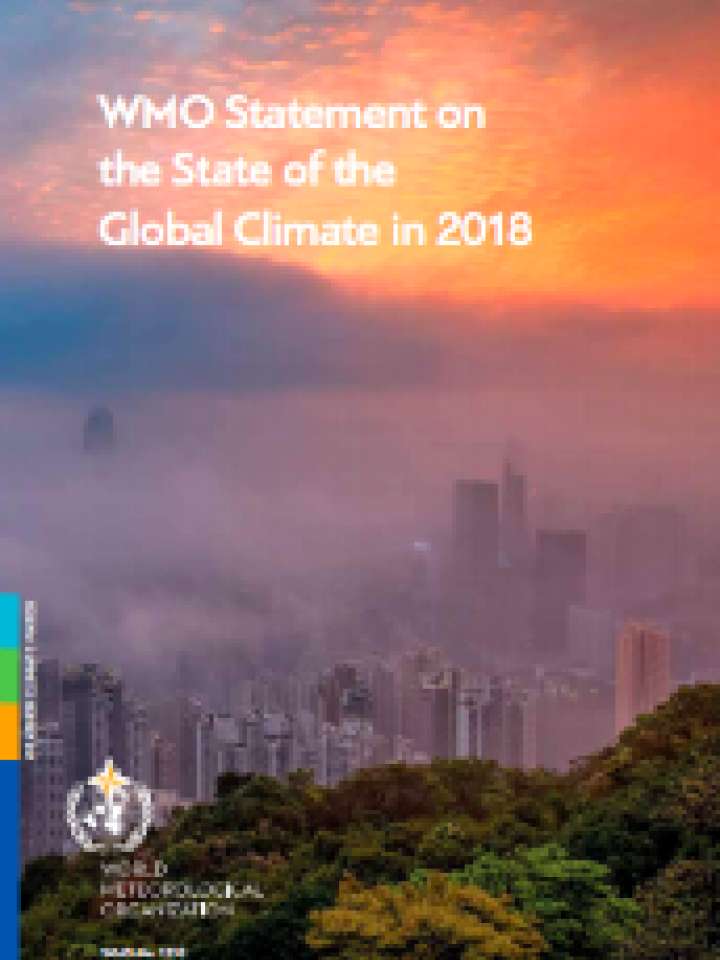WMO statement on the state of the global climate in 2018
This publication marks the twenty-fifth anniversary of the WMO Statement on the State of the Global Climate, which was first issued in 1994. The 2019 edition treating data for 2018 marks sustained international efforts dedicated to reporting on, analysing and understanding the year-to-year variations and long-term trends of a changing climate.
Key findings of this Statement include the striking consecutive record warming recorded from 2015 through 2018, the continuous upward trend in the atmospheric concentration of the major greenhouse gases, the increasing rate of sea-level rise and the loss of sea ice in both northern and southern polar regions.
The understanding of the linkage between the observed climate variability and change and associated impact on societies has also progressed, thanks to the excellent collaboration of sister agencies within the United Nations system. This current publication includes some of these linkages that have been recorded in recent years, in particular from 2015 to 2018, a period that experienced a strong influence of the El Niño and La Niña phenomena in addition to the long-term climate changes.
Global temperature has risen to close to 1 °C above the pre-industrial period. The time remaining to achieve commitments under the Paris agreement is quickly running out.
This report will inform the United Nations Secretary-General’s 2019 Climate Action Summit. I therefore take this opportunity to thank all the contributors – authors, National Meteorological and Hydrological Services, global climate data and analyses centres, Regional Specialized Meteorological Centres, Regional Climate Centres and the United Nations agencies that have collaborated on this authoritative publication.
Explore further
